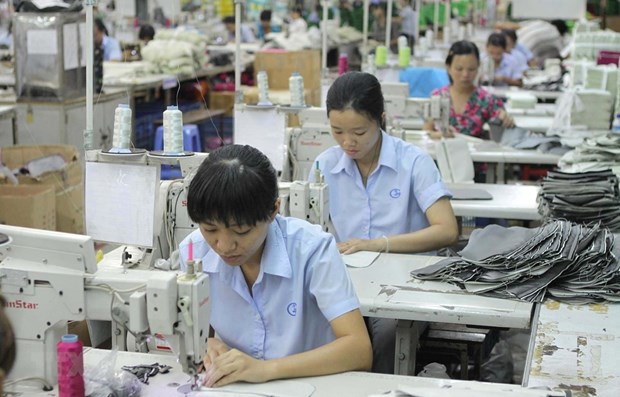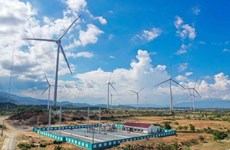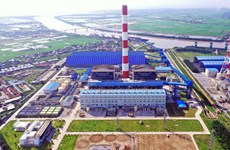GDP growth in nine months - a success of Vietnam amid severe COVID-19 impacts
 GDP in the first nine months of 2021 expanded 1.42 percent year on year due to severe impacts of COVID-19 (Illustrative image. Source: VNA)
GDP in the first nine months of 2021 expanded 1.42 percent year on year due to severe impacts of COVID-19 (Illustrative image. Source: VNA)Hanoi (VNA) – A 1.42 percent year-on-year growth in gross domestic product (GDP) was recorded in the first nine months of this year in the context of prolonged social distancing measures as part of COVID-19 prevention and control efforts affecting all areas of the Vietnamese economy. Experts said the result is a great success of the country amid the pandemic situation.
According to the General Statistics Office (GSO), the result showed Vietnam’s great attainments in the fight against the COVID-19 pandemic and maintaining production and business amid the prolonged period of social distancing in many provinces and cities.
The agency reported that the nation’s GDP declined by 6.17 percent annually in the third quarter, the sharpest drop since Vietnam began calculating and announcing its quarterly GDP figures in 2000. Of which, industry and construction contracted by 5.02 percent, services down 9.28 percent, and agro-forestry-fishery down 1.04 percent.
Also in the third quarter, consumption was down 2.83 percent year-on-year, asset accumulation up 1.61 percent, exports of goods and services up 2.51 percent, and imports of goods and services moved up 10.75 percent.
The nine-month GDP growth was thanks to the agro-forestry-fishery sector with an expansion rate of 2.74 percent, contributing 23.52 percent to the overall growth; and the industry and construction sector with a growth rate of 3.57 percent, contributing 98.53 percent. Meanwhile, services were down 0.69 percent, pulling national growth down by 22.05 percent.
Agro-forestry-fisheries continued to play its role as a mainstay of the economy amid the pandemic. Specifically, agriculture grew by 3.32 percent, contributing 0.31 percentage point to the added value growth of the economy. Forestry and fisheries each added 0.02 percentage point thanks to their respective expansion rates of 3.3 percent and 0.66 percent.
Meanwhile, industry and construction, manufacturing and processing are growth driving forces of the economy with an expansion of 6.05 percent, contributing 1.53 percentage points to the added value growth of the entire economy.
The prolonged wave of pandemic badly affected trade and service activities. The wholesale and retail sector fell by 3.1 percent, the transportation and warehousing industry decreased by 7.79 percent and the accommodation and food service industry dropped by 23.18 percent.
The health sector, in contrast, achieved the highest growth rate with a sharp increase of 21.15 percent, followed by the financial, banking and insurance industry with an increase of 8.37 percent and information and communication, up by 5.24 percent.
Regarding the economic structure in the January-September period, the agro-forestry-fisheries sector made up 12.79 percent of the economy. The contribution from industry and construction sector was 38.03 percent, while that of service sector was 40.19 percent, and product taxes less subsidies on production 8.99 percent.
In the period, export revenue of products and services expanded 14.21 percent, while imports rose 18.46 percent.
Le Trung Hieu, head of the Department of System of National Accounts under the GSO noted that with a growth of 1.42 percent for three fourths of the year, the target of 6.5 percent of economic growth for the whole year is infeasible.
Hieu attributed the situation to the outbreak of COVID-19 in many localities, posing devastating impacts on economic production, especially in localities applying social distancing in a long time and causing minus growth in the third quarter of this year, far below the expectations.
However, he asserted that Vietnam still has chances to improve economic growth if the COVID-19 pandemic resurgence is early contained. Currently, the vaccination drive is being conducted drastically towards a target of injecting two COVID-19 vaccine shots to 70 percent of the population in the middle of 2022.
“This will help Vietnam put the pandemic under control and stop its spreading, thus quickly setting up the new normal period in socio-economic activities,” Hieu stressed./.












